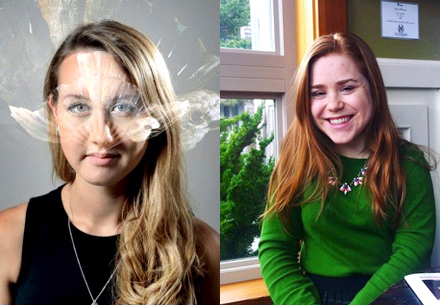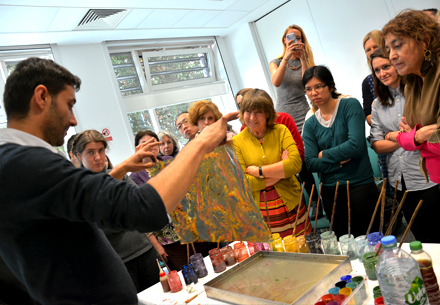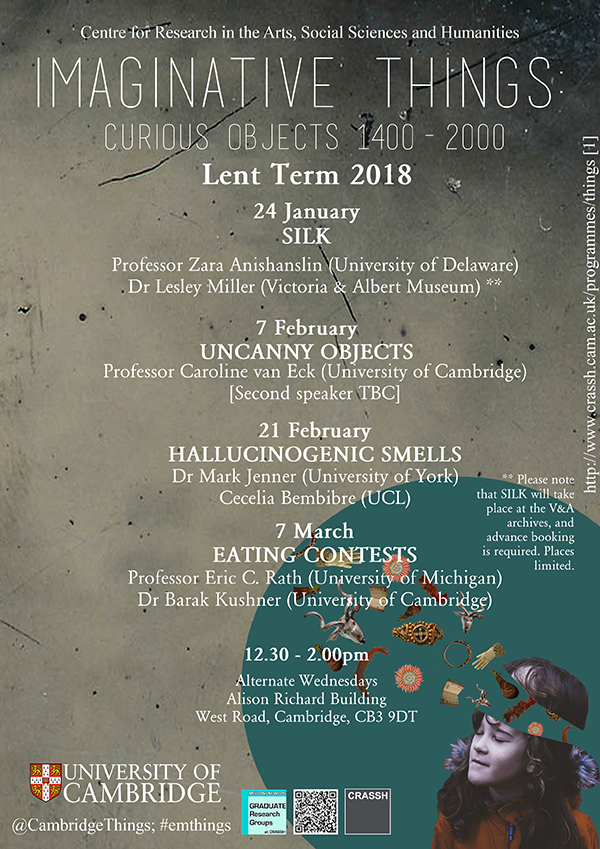Imaginative Things: Curious Objects 1400–2000 is one of eleven interdisciplinary CRASSH Research Groups running fortnightly seminars in the academic year 2017-18. Annie Thwaite and Abigail Gomulkiewicz introduce the group on behalf of its four convenors (Annie Thwaite, Abigail Gomulkiewicz, Laia Portet-i-Codina and Valerio Zanetti).

Annie Thwaite and Abigail Gomulkiewicz
Q. Annie and Abigail, founded in 2011 Things is CRASSH’s longest-running research group. How has the theme evolved over the years?
Things was founded to use an object-based approach to consider different periods of history, exploring lived human experiences as well as global dimensions of material culture. Although the early years primarily examined the early modern period, the research group has expanded both temporally and thematically throughout the years. Speakers now cover a multitude of time periods from the 1400s to the modern day. This transformation is demonstrated by our title this year (Imaginative Things: Curious Objects 1400–2000) which included ‘2000’ for the first time.
In terms of theme, Things presents a new innovative framework each year. Past themes have addressed different elements of material culture, including the ‘material turn’ in scholarship, construction and reconstruction, and embodied cognition. These various concentrations have addressed various movements within academia, as well as highlighting the need for interdisciplinary work within universities, museums, practitioners and beyond.
Q. By definition, a CRASSH research group has an interdisciplinary question at its core. What’s yours?
Objects are central to our seminar, and each year we examine ‘things’ through a different lens. However, we believe that the most informative way to view material culture is through an interdisciplinary perspective which allows us to gain new insight into our own fields, and furthermore gain a better understanding into the interaction between human practices, emotions, and artefacts throughout time. The last two years we have especially pushed the bounds of our research group by inviting makers alongside academics to our sessions. For instance, a seamstress and surgeon discussed the value of stitching, whilst a Turkish artist discussed the craft of paper marbling also known as ‘Ebru’. These sessions have helped us appreciate how the construction and materials which form an object are often quite vital to its meaning and value.

Paper marbling session
Q. Could you tell us a bit more about this year’s convenors, speakers and attendees and the perspectives they bring to the discussion?
Discussion is at the centre of Things. Each participant – whether convenor, speaker or attendee – adds a vital layer to our sessions. This year, Things is convened by four PhD students from the History Faculty and the History and Philosophy of Science Department. Material culture is an important part of all our research. We are interested both in the things themselves and the various interdisciplinary methodologies which have governed their study. We collectively cover a variety of countries, including England, Italy, France, Spain, and Germany and several time periods from the sixteenth to eighteenth century. Many of us also have backgrounds in design as well as historical reconstruction which add another element to our interest in material culture processes. Our backgrounds, therefore, help us generate a diverse range of themes, methods, time periods, and speakers for each session.
The speakers are another critical part of discussion at Things. Their talks and questions are often where our seminar really highlights the potential for interdisciplinary work in material culture. This year alone, we paired the Turkish ‘Ebru’ artist with an English Literature academic at our ‘Paper Marbling’ session, and had curators in discussion with historians at our ‘Leather’ seminar. We also observed how both an economic and social understanding of early modern featherwork alongside an exploration into the feathers found in natural science texts created a more nuanced understanding of these objects in the early modern world during the ‘Feathers’ session. The different methodologies and perspectives presented by these speakers illuminated unique elements of both facets of study in innovative ways.
Finally, our attendees form a critical part of the discussion. They come from various departments ranging from history and art history, to archeology and modern languages, as well as from various museums throughout Cambridge. They are academics, practitioners, and even interested members of the public. They offer different perspectives, ask challenging questions and show real enthusiasm. They are truly the foundation which keeps Things thriving. So, with these various parts combined, our research group features rich discussion and connects speakers and audience members from different backgrounds under a common theme of material culture.
Q. Your session on ‘Silk’ includes a visit to the Victoria and Albert Museum this month. Tell us more.
One of the exciting additions to Things this year is our further collaboration with Dr Marta Ajmar and the V&A Research Institute (VARI) which consolidates a successful partnership begun in the last academic year. This partnership has helped further extend the audience for our sessions, and expanded the ‘hands-on’ experience of our interrogations through the extensive collections housed at the V&A. We are holding two of our seminars this year at the museum and their archives in order to make use of the privileged access to a multitude of objects and specialist curators.
The first session on Wednesday 24 January features two experts – Professor Zara Anishanslin (University of Delaware) and Dr Lesley Miller (Senior Curator – Textiles, V&A) – who will discuss the theme of ‘Silk’. Participants will hear about the cultural, historical, and economic significance of silk while handling silk objects from the museum’s stunning collections. These seminars aim to provide attendees with an extensive, multifaceted, and multi-sensorial experience which shows how studying the whimsical side of material culture opens the way to a deeper understanding of objects. The second session in May will feature an interdisciplinary look at ‘Glass’. Please stay tuned for more upcoming details.
Q. What else can we expect from Imaginative Things in 2018?
Over the course of the remaining two terms, we have sessions which include all sorts of curious themes from ‘Hallucinogenic Smells’ to ‘Eating Contests’ to ‘Taxidermy’. As always, our discussions will join academics with more practiced-based speakers to offer a well-rounded discussion on imaginative things. Keep your eyes peeled, following our Twitter (@CambridgeThings) and Facebook for updates. Also be sure to sign up to our mailing list via our page on the CRASSH website.
About the Authors
Abigai Gomulkiewicz:
My name is Abigail Gomulkiewicz and I am currently a 2nd year PhD student at Clare Hall under the supervision of Professor Ulinka Rublack. My research explores Elizabethan aristocratic society through the clothing and accessories of William Cecil and his household. It combines extant objects, written materials, and historical reconstruction.
Annie Thwaite:
I’m Annie, and I’m doing my PhD at the department of History and Philosophy of Science under the supervision of Dr Lauren Kassell. My research examines the material culture of healing – in particular, magical objects used to protect and cure in seventeenth century England. I’m currently a Wellcome Secondment Fellow at the Science Museum in London, exploring their amulet collection!
The views, thoughts and opinions expressed on the CRASSH blog belong solely to the authors and do not necessarily represent the views of CRASSH or the University of Cambridge.


